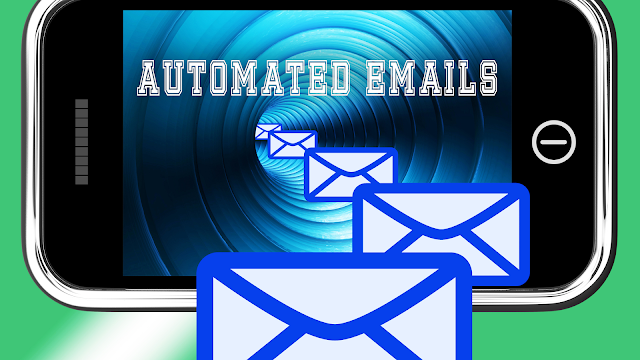Get More Done With Less Effort: The Magic Of Email Automation
Explanation of the problem: overwhelming amounts of email
Email has supplanted other forms of communication for both organizations and individuals as the world becomes more digital. Email has sped up and improved communication, but it has also resulted in a daily deluge of messages that overload our inboxes. Sorting through and responding to every email we get may be a difficult chore that takes a lot of time.
The solution: email automation
Email automation can be used as a remedy in this situation. Using software to automate the sending and receiving of emails is known as email automation. To make sure that your messages are being sent to the appropriate recipients at the appropriate time, you can use it to segment your email list, plan and send emails at particular times, and even trigger automatic reactions in response to specified occurrences.
Importance of using email automation
One cannot overestimate the value of email automation. By streamlining your email correspondence, you may concentrate on more crucial duties and free up time for other activities. The following are a few major advantages of implementing email automation:
Efficiency gain: You may send numerous emails simultaneously with email automation, and you can even plan them to go out at specified times. You may use that time to do other things instead of manually sending each email, saving you time and effort.
Increased engagement: You may raise engagement rates and the probability that your communications will be read and acted upon by segmenting your email list and sending targeted messages to particular groups of individuals.
Improved revenue: By sending targeted communications to your clients at the appropriate times, email automation may assist you in making more money. For instance, you may send consumers who have recently made a purchase a promotional email pushing them to make another purchase.
Improved customer relationships: By automating your email correspondence, you can make certain that your customers receive timely and pertinent communications from you, which may support the development of trust and deepen your connection with them.
Workload reduction: By automating your email correspondence, you may lessen your burden and free up time for other crucial duties like expanding your business or creating new goods.
What is Email Automation?
Email automation is a potent tool that may assist both organizations and individuals in successfully and efficiently managing their email correspondence. This post will define email automation, give email automation examples, and go through the advantages of utilizing email automation.
Definition
The term "email automation" describes the use of software to speed up the sending and receiving of emails. To guarantee that your messages are being sent to the appropriate people at the right time, you may segment your email list, schedule emails to be sent at specified times, or trigger automatic responses in reaction to certain occurrences.
By streamlining your email correspondence, email automation may help you save time and effort and concentrate on more essential activities.
Examples of email automation
Businesses and individuals may utilize a variety of email automation examples to enhance their email correspondence. Here are a few illustrations:
Welcome emails: You may use email automation to send a welcome email to introduce yourself and your company to a person who subscribes to your newsletter or establishes an account on your website.
Emails sent in response to abandoned carts: If a customer adds things to their cart but abandons the checkout process, you can use email automation to send a follow-up email urging them to finish their purchase.
Follow-up emails sent after a sale: Once a customer makes a purchase, you can use email automation to send them a thank-you note and a list of related goods and services they might find interesting.
Emails sent to consumers on their birthdays or anniversaries can be tailored and give them special discounts or promotions using email automation.
Re-engagement emails: You may use email automation to send re-engagement emails to those who haven't interacted with your emails in a while to persuade them to do so once again.
Benefits of email automation
Using email automation to handle your email correspondence has a lot of advantages. These are a few major advantages:
Efficiency gain: By automating your email correspondence, you may save time and effort and concentrate on other crucial duties.
Increased engagement: You may raise engagement levels and enhance the probability that your communications will be read and acted upon by sending targeted messages to particular groups of individuals.
Improved revenue: By sending targeted communications to your clients at the appropriate times, email automation may assist you in making more money.
Improved customer relationships: By automating your email correspondence, you can make certain that your customers receive timely and pertinent communications from you, which may support the development of trust and deepen your connection with them.
Workload reduction: By automating your email correspondence, you may lessen your burden and free up time for other crucial duties like expanding your business or creating new goods.
How to Set Up Email Automation
Email automation is a potent tool that may assist both organizations and individuals in successfully and efficiently managing their email correspondence. Nevertheless, if you don't know where to begin, setting up email automation might be a difficult undertaking. In this post, we'll look at how to set up email automation by deciding on the best tools, setting goals, making a timetable, and writing persuasive emails.
Identifying your goals
Establishing your goals is the first step in setting up email automation. What are you hoping to accomplish with email automation? Do you want to save time and effort, boost revenue, or improve connections with your customers? Once your objectives are clear, you can begin to create a strategy for accomplishing them.
Choosing the right tools
Choosing the appropriate tools for your email automation is the next step. There are several email automation solutions available, and each has advantages and disadvantages. Hubspot, ActiveCampaign, and Mailchimp are a few well-liked choices. Think about things like usefulness, price, and convenience of use when selecting a tool.
Creating a plan and schedule
The next stage is to make a strategy and timetable for your email automation when you have determined your goals and selected the appropriate tools. This entails choosing the email formats you want to use, the frequency at which you want to send them, and the audience you want to reach. It's crucial to develop a timetable that is both consistent with your entire marketing plan and practical and attainable.
Crafting effective email copy
Finally, it's crucial to write compelling email text that will grab your readers' attention and motivate them to take action. Consider elements like your target demographic, the email's goal, and the tone and style of your message while writing your email text. Your email's text should be succinct, understandable, and compelling, and it should include a call to action that inspires readers to take the next step.
Businesses and individuals wishing to manage their email communication more successfully and efficiently may find that setting up email automation is a potent tool. You can make sure that your email automation is successful and aids you in achieving your marketing goals by establishing your goals, picking the appropriate tools, making a strategy and timetable, and writing persuasive email text. Hence, invest some time in planning and setting up your email automation immediately so you can start enjoying the advantages of this effective marketing tool.
Best Practices for Email Automation
Businesses and people may manage their email communication more successfully and efficiently with the aid of email automation, which is a potent tool. Yet, it's crucial to adhere to best practices that will help you engage your audience and accomplish your marketing objectives if you want to be sure that your email automation is a success. The best practices for email automation will be discussed in this post, including segmenting your email list, customizing your emails, A/B testing, and monitoring and changing your automation.
Segmenting your email list
Segmenting your email list is one of the most crucial best practices for email automation. This is breaking up your email list into more manageable categories according to traits like demographics, habits, hobbies, and preferences. You may better target and customize email campaigns that will resonate with your audience by segmenting your email list. Increased open, click-through, and conversion rates may result from this.
Personalizing your emails
Personalizing your emails is a crucial best practice for email automation. Personalization is adjusting your emails to your audience's unique demands and interests utilizing data and insights. This might involve addressing them by name in the email, making mention of their previous interactions or purchases, and sending them offers and material that is pertinent to them. Your readers will feel more connected to you if you personalize your emails, which will also make your email campaigns more successful.
A/B testing
Another crucial best practice for email automation is A/B testing. In order to identify which email marketing version is more successful, two versions must be created and tested against one another. By experimenting with alternative subject lines, email text, graphics, calls-to-action, and other features, A/B testing may help you improve your email campaigns. You may make data-driven decisions that enhance the effectiveness of your email automation by determining which components are more successful.
Monitoring and adjusting your automation
Lastly, it's critical to continuously check and modify your email automation. This entails keeping track of important metrics like open rates, click-through rates, and conversion rates and using this information to modify your email marketing. For instance, you may alter the subject line, email text, or other components of a campaign if you see that it isn't doing as well as it could. You can make sure that your email automation keeps producing effective results over time by monitoring and making necessary adjustments.
When it comes to successfully and efficiently managing email communication, email automation is a game-changer. What email automation is, how to set it up, and the best practices to use have all been covered in this post. Let's now review the advantages of email automation, encourage you to give it a try, and conclude with a few closing remarks and a call to action.
Recap of the benefits of email automation
Email automation offers numerous benefits to businesses and individuals, including:
- Saving time and effort by automating repetitive tasks
- Improving productivity by freeing up time to focus on other tasks
- Providing a more personalized and targeted approach to email marketing
- Increasing engagement and conversion rates through effective segmentation and personalization
- Improving the customer experience by delivering relevant and timely content
- Optimizing email campaigns through A/B testing and ongoing monitoring and adjustments.
Encouragement to try email automation
We recommend giving email automation a try if you haven't already. Email automation may assist you in achieving your marketing objectives and reaching your audience more successfully and effectively if the proper tools and best practices are in place. Don't let the process frighten you; start small, test, and iterate, then reap the rewards of a successful email marketing campaign.
Final thoughts and call to action
Email automation is a potent tool that may assist both organizations and individuals in successfully and efficiently managing their email correspondence. You can design more focused and interesting email campaigns that achieve results by segmenting your email list, customizing your emails, doing A/B tests, and monitoring and tweaking your automation. By experimenting and trying new things with your email automation, you can maximize the effectiveness of this potent marketing tool.
Finally, email automation is a need for any company or person trying to up their email marketing game. You may save time, increase productivity, and enhance engagement and conversion rates by putting best practices into practice and utilizing the advantages of email automation. What are you still holding out for? See how email automation can change your email marketing strategies by starting your exploration now!











